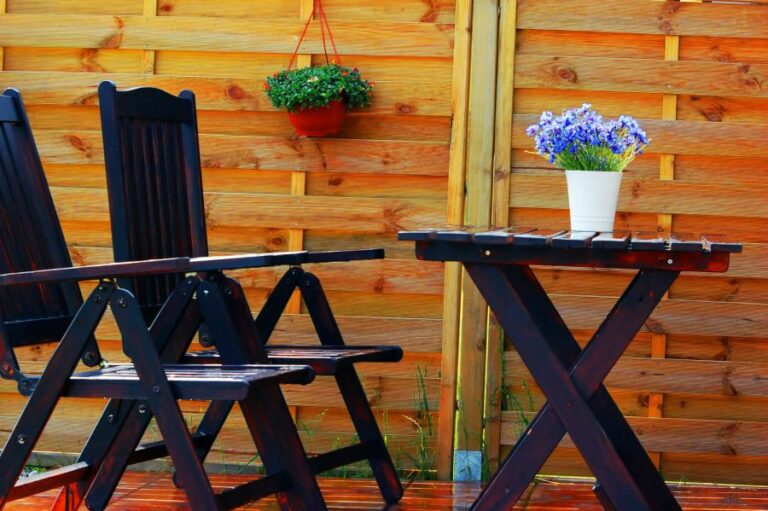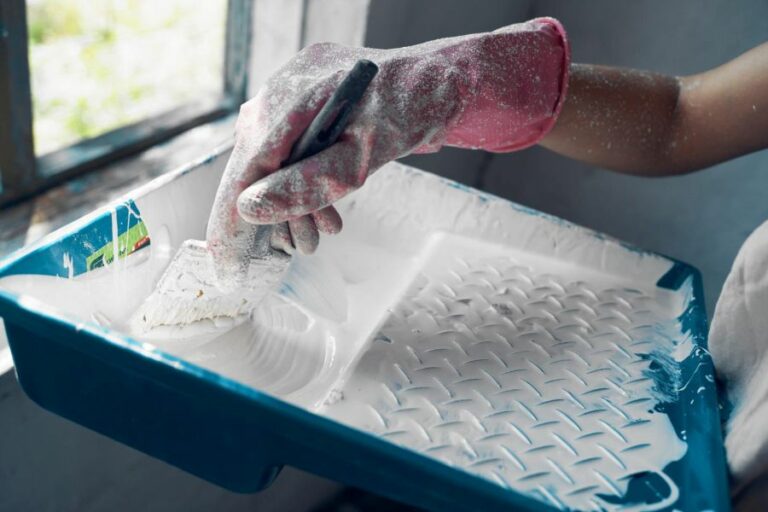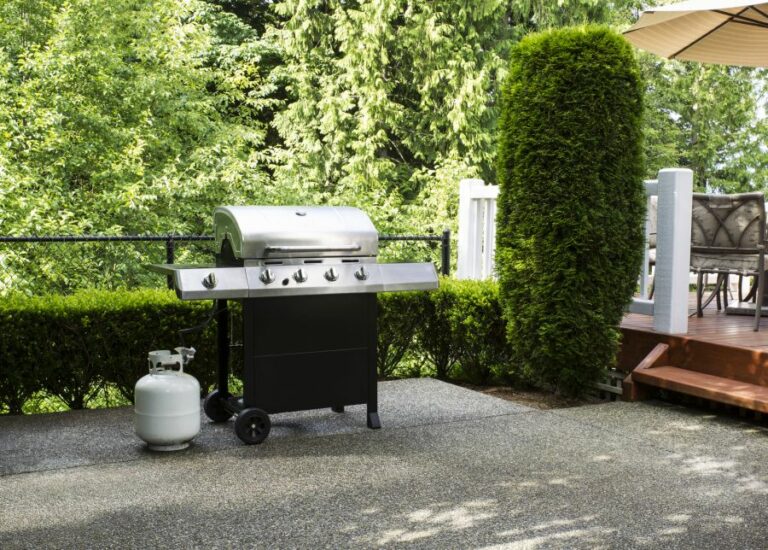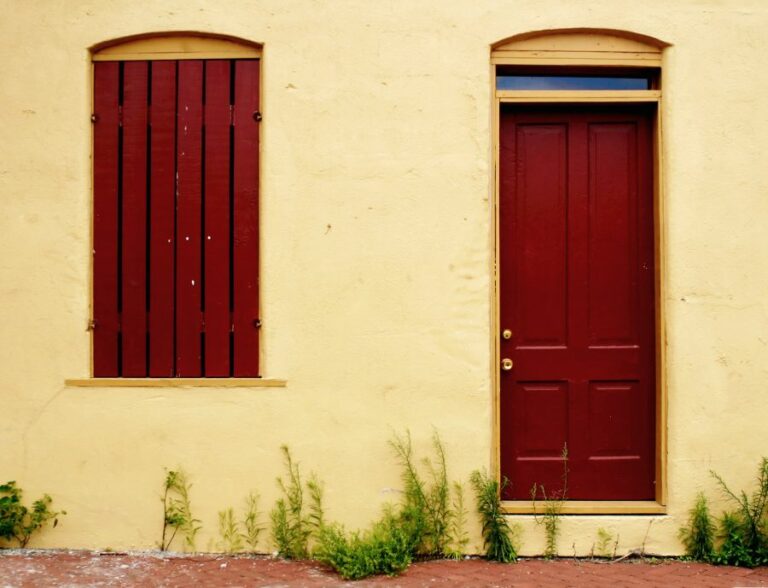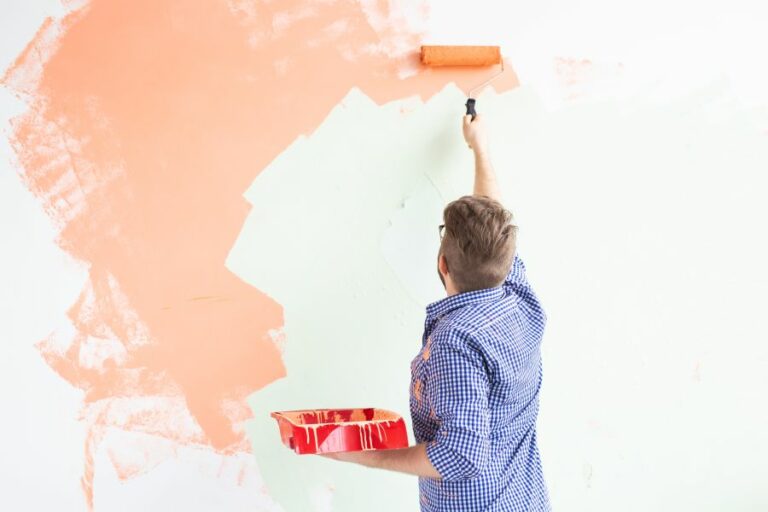Patio Paint Outdoor, 25 Things You Should Know
Are you tired of your dull, lifeless patio? Yearning for a stunning outdoor space that will be the envy of your neighbors? Look no further! This blog post offers the ultimate guide for transforming your patio into a colorful, eye-catching oasis. Discover top-notch tips, expert advice, and fabulous inspiration for selecting the perfect paint color, mastering the application technique, and maintaining beautiful results.
Patio paint outdoor:>
Patio paint outdoor is a specially formulated paint designed for surfaces like concrete, wood, and bricks, protecting patios and outdoor areas from damage while enhancing the appearance and home value. Common types include acrylic latex, epoxy-based, and oil-based paints. Proper surface preparation, the right application tools, and following manufacturer instructions are crucial for a successful outcome. Ideal painting conditions are temperatures between 50°F and 85°F with low humidity, avoiding direct sunlight. Test the paint in an inconspicuous area before committing to the entire project.

Explore the world of patio paint outdoors, where colors, textures, and finishes transform your space into a vibrant oasis. Discover expert tips, step-by-step guides, and innovative techniques to create a stunning and long-lasting patio surface. Unleash your creativity now!
Contents
- 1 Patio Paint for Outdoor Spaces
- 2 Which Kind of Paint is Most Suitable for an Outdoor Patio Area?
- 3 Is it a Wise Decision to Apply Paint on a Patio Surface?
- 4 Is it a Good Idea to Paint a Concrete Patio?
- 5 Is Patio Paint Resistant to Water Penetration?
Patio Paint for Outdoor Spaces
• Introduction
Outdoor patio paint is a specially formulated paint designed to withstand the harsh elements of the outdoors and can be used on a variety of surfaces, such as concrete, wood, and bricks, to name a few.
Not only does it help protect your patio and outdoor spaces from damage, but it can also enhance the appearance and increase the value of your home.
• Types of Patio Paint Outdoor
There are several types of outdoor patio paint available on the market. The most commonly used types are:
– Acrylic Latex
Acrylic latex paint is a water-based paint that is highly durable, provides excellent adhesion to different surfaces, and is resistant to fading, chipping, and cracking. It is also easy to clean, eco-friendly, and has a low odor. This type of paint is suitable for both concrete and wooden surfaces.
– Epoxy-Based
Epoxy-based paint is a highly durable, chemical-resistant paint that is ideal for concrete surfaces. It forms a thick, glossy, and long-lasting protective layer that can withstand heavy foot traffic, chemicals, and abrasions.
However, epoxy paint can be slightly more difficult to apply and requires accurate mixing and timely application.
– Oil-Based
Oil-based paints are known for their durability and their ability to penetrate deeply into the surface, providing excellent adhesion. Oil-based patio paint is highly resistant to water, chemicals, and abrasion, making it suitable for both concrete and wooden surfaces.
However, it takes longer to dry, has a strong odor, and is not as eco-friendly as acrylic latex paints.
• Surface Preparation
Preparing the surface before applying patio paint outdoors is essential for a successful outcome. A clean, dry, and well-prepared surface ensures proper adhesion and longevity of the paint.
– Concrete Surfaces
- Cleaning: Remove any dirt, debris, grease, or oil from the concrete surface using a power washer or a stiff brush with soap and water. Allow the surface to dry completely before proceeding.
- Repair: Fill any cracks or holes with a concrete patching compound and smooth out any uneven areas using a concrete leveling compound.
- Etching: For epoxy-based paint, etching the concrete is necessary to create a rough texture for better adhesion. Follow the manufacturer’s instructions to use an etching solution or muriatic acid on the surface.
- Priming: Applying a concrete primer before painting can improve the adhesion and overall finish of the paint.
– Wooden Surfaces
- Cleaning: Remove dirt, debris, and mildew from the wooden surface using a power washer or a stiff brush with soap and water. Allow the surface to dry completely before proceeding.
- Sanding: Sand the surface using medium-grit sandpaper to remove old paint and smooth out rough or splintered areas.
- Repair: Fill any holes or cracks with a wood filler or putty.
- Priming: Applying a wood primer before painting can improve the paint’s adhesion and overall finish and protect the wood from moisture and rot.
• Application Process
Once the surface is clean and prepared, you can begin the application process.
- Choosing the right tools: Selecting the appropriate brush, roller, or spray equipment for the specific paint type and surface will help ensure a smooth and even application.
- Mixing the paint: Thoroughly mix the patio paint according to the manufacturer’s instructions. For epoxy-based paint, make sure to measure and mix the components accurately to achieve the desired curing and hardness.
- Applying the paint: Apply the first coat of paint in a thin and even layer using the chosen painting tool. Allow the paint to dry according to the manufacturer’s recommendations before applying additional coats.
- Multiple coats: Depending on the paint type and desired finish, 2-3 coats of paint may be necessary. Make sure to let each coat dry before applying the next one.
• Tips and Tricks for a Successful Outcome
- Check the weather: Painting in ideal weather conditions (between 50°F and 85°F with low humidity) can ensure better adhesion and a faster drying time.
- Avoid painting in direct sunlight: Painting in direct sunlight can cause the paint to dry too quickly, leading to an uneven finish or poor adhesion.
- Use painter’s tape: Protect adjacent surfaces that you do not want to paint by using painter’s tape, making sure to remove it carefully before the paint dries completely.
- Test the paint: Perform a small test patch in an inconspicuous area to see the final finish and adhesion of the paint before committing to the entire project.
- Properly store leftover paint: Store leftover paint in an airtight container, away from direct sunlight or extreme temperatures.
By following these guidelines and recommendations, you can successfully transform your patio and outdoor spaces using patio paint outdoor, giving them a fresh, new look while protecting them from the elements for years to come. Happy painting!
Which Kind of Paint is Most Suitable for an Outdoor Patio Area?
An outdoor patio is essential to many homes, providing relaxation, entertainment, and al fresco dining space. As with any part of your home, maintaining the appearance and durability of your patio is crucial to preserve its aesthetics and overall value.
One way to do this is by applying a fresh coat of paint designed explicitly for outdoor patios.
• Comparing the Different Types of Outdoor Patio Paints
Several types of paints are available in the market for outdoor patios, each with unique characteristics and benefits. These paints typically fall into three categories:
– Acrylic Latex Paint
Acrylic latex paint is popular among many homeowners due to its versatility and durability. This type of paint is water-based and offers excellent resistance to UV rays, mildew, and wear and tear caused by foot traffic.
It is also easy to clean and maintain, making it a user-friendly option for do-it-yourself enthusiasts.
Pros of Acrylic Latex Paint
- Durable and long-lasting
- Resistant to UV rays and mildew growth
- Easy to clean
Cons of Acrylic Latex Paint
- May require multiple coats to achieve desired coverage
- Not as eco-friendly as some other paint options
– Epoxy Paint
Epoxy paint is a high-performance, two-component paint that provides a hard, glossy finish, fantastic durability, and exceptional resistance to chemicals and abrasion. This property makes it an excellent option for outdoor patios with heavy foot traffic or those exposed to harsh environmental elements.
Pros of Epoxy Paint
- Extremely durable and long-lasting
- Resistant to chemicals, abrasion, and UV rays
- Colorful and glossy finish
Cons of Epoxy Paint
- More challenging to apply than other paint options
- May not be suitable for all patio surfaces
- Can be expensive compared to other paint types
– Concrete Stain
While not technically a paint, concrete stain is a popular choice for outdoor patios, particularly those made of concrete, as it offers a unique, natural finish that enhances the color and texture of the patio’s material.
They are available in water- and acid-based options, each providing a distinct look.
Pros of Concrete Stain
- Provides a unique, natural look for concrete patios
- Requires little to no maintenance
- Durable and long-lasting
Cons of Concrete Stain
- Not suitable for non-concrete surfaces
- May require professional application
- Less color variety compared to paints
• Essential Factors to Consider When Choosing an Outdoor Patio Paint
Several factors will influence your decision when selecting the paint type that best suits your patio’s functionality and aesthetics requirements. Consider the following aspects when making your choice:
– Surface Material
The type of material your patio is constructed from will significantly influence your paint choice. While acrylic latex paints are versatile and suitable for various surfaces, epoxy paints work best on concrete surfaces. Similarly, concrete stains are designed explicitly for concrete patios.
– Weather Conditions
Your local climate will play a crucial role in determining which paint type is ideal for your patio. For instance, if you live in an area with high humidity and moisture levels, you may want to opt for a paint that offers excellent resistance to mold and mildew, such as acrylic latex paint.
– Application Process
If you plan on applying the paint yourself, consider the ease of application for each type of paint. Acrylic latex paints are generally the easiest to apply and clean up, while epoxy paints may require more preparation and care during the application process.
– Budget
It’s essential to consider your budget when choosing outdoor patio paint. While epoxy paints and concrete stains may be more expensive than acrylic latex options, they can offer greater durability and longevity, providing better value for money in the long run.
• Final Recommendations
After considering the factors mentioned above, I recommend opting for the following paint types depending on your patio’s specific needs:
- Acrylic Latex Paint: Ideal choice for most patios due to its versatility, durability, and ease of application.
- Epoxy Paint: Recommended for concrete patios that experience heavy foot traffic or harsh environmental elements.
- Concrete Stain: Best choice for homeowners who desire a more natural, unique finish for their concrete patios.
Ultimately, the best paint type for your outdoor patio will depend on your specific needs and preferences. By assessing factors such as surface material, weather conditions, ease of application, and budget, you can determine which paint option will provide the ideal balance of aesthetics, durability, and value for your patio.
Type of Paint | Description | Pros | Cons |
|---|---|---|---|
Acrylic Latex | Water-based paint with acrylic resins | Fast drying, easy to clean, resists peeling and flaking | Not as durable as oil-based paint, may require more frequent repainting |
Oil-Based | Solvent-based paint with natural or synthetic oils | Highly durable, weather-resistant, long-lasting | Slow drying, strong fumes, harder to clean |
Epoxy | Two-component paint that cures through a chemical reaction | Extremely durable, resistant to chemicals and abrasion. | Requires extensive surface preparation, may yellow in sunlight |
Concrete Stain | Semi-transparent coating that penetrates the concrete surface | Long-lasting, UV-resistant, low-maintenance. | Limited color options, may not completely hide surface imperfections |
Is it a Wise Decision to Apply Paint on a Patio Surface?
A patio extends your living space, creating an inviting area for outdoor activities, relaxation, and entertainment. Beautifying your patio with the right color and style can significantly impact your outdoor area’s overall aesthetics and functionality.
One common way of improving a patio’s appearance is by painting it.
• Choosing the Right Materials and Colors for Your Patio
The first consideration when deciding whether to paint your patio is the material of your patio surface. Some materials, such as concrete, can readily absorb paint and ensure better adhesion. Others, such as natural stones or bricks, might require more preparation and expertise for the paint to bond successfully.
Likewise, selecting the appropriate paint type is crucial. For outdoor surfaces, acrylic or latex paints are typically recommended due to their durability, flexibility, and resistance to weather conditions.
Furthermore, it’s essential to choose a paint color that complements your house’s color scheme to achieve a harmonious appearance.
• Advantages of Painting a Patio
– Enhanced Durability and Protection
Painting a patio can offer several benefits, including increased durability and protection against environmental damage. A freshly painted patio can effectively withstand heavy foot traffic, harsh sunlight, shifting temperatures, moisture, and stains.
High-quality paint can also help inhibit the growth of mold, mildew, and algae, which can cause damage to a patio’s surface.
– Improved Appearance and Curb Appeal
Another advantage of painting a patio is the opportunity to enhance its overall look and curb appeal. A well-painted patio can create a vibrant and inviting outdoor space that draws the eye and encourages people to spend more time outdoors.
Additionally, a thoughtfully chosen paint color can help incorporate the patio into your overall landscaping and enhance your property’s value.
– Cost-Effective Method of Patio Renewal
If your existing patio is structurally sound and functional but shows signs of wear and tear, repainting it can be a cost-effective way to refresh its appearance.
Painting a patio is considerably cheaper than a complete replacement or installation of new materials, making it an excellent option for homeowners on a budget.
• Disadvantages of Painting a Patio
– Surface Preparation and Application
Before painting a patio, thorough surface preparation is necessary to ensure proper paint adhesion and longevity. This process can be labor-intensive and time-consuming, involving cleaning, repairing cracks, and using a suitable primer.
Additionally, painting a patio can be challenging, especially for first-time DIYers, and may require the assistance of a professional.
– Regular Maintenance and Repainting
Like other painted surfaces, painted patios will eventually require maintenance and repainting. Over time, exposure to the elements and regular use can cause the paint to fade, chip, or peel.
This necessitates regular inspection, cleaning, touching up, or even complete repainting every few years, depending on the paint quality and your patio’s specific conditions.
– Potential Slip Hazards
Painting a patio can sometimes result in a slippery surface, especially when wet, posing safety risks. To mitigate these concerns, it’s essential to select a paint that includes slip-resistant additives or apply a separate non-slip coating over the painted surface.
• Expert Recommendations
Considering the advantages and disadvantages of painting a patio, it can be a good idea to paint a patio under the right conditions. Here are some expert recommendations for a successful patio painting project:
- Assess your patio’s material and consider your desired outcome.
- Choose high-quality, weather-resistant paints and relevant products.
- Properly prepare your patio’s surface and follow the correct painting technique.
- Maintain and inspect your painted patio regularly to ensure its beauty and functionality.
- Consult a professional if needed or for the best results.
In conclusion, painting a patio can be a good idea for homeowners who want a cost-effective way to revitalize and protect their outdoor space.
By considering factors such as surface preparation, durability, maintenance, and cost, you can decide whether painting your patio is the right choice for your specific circumstances.
Is it a Good Idea to Paint a Concrete Patio?
The idea of painting a concrete patio can be appealing as it offers numerous potential benefits such as an aesthetic upgrade, added protection, and customization. However, it is crucial to consider both the advantages and disadvantages before diving into this project.
• Benefits of Painting a Concrete Patio
– Enhanced Appearance
One of the primary reasons homeowners choose to paint their concrete patio is to improve its aesthetic appeal. With a wide selection of colors and finishes available, painting can transform a dull grey slab into an attractive and inviting outdoor living space.
– Increased Durability
Concrete is a porous material that can absorb water, which can lead to cracks or flaking over time. By painting your concrete patio, you create a protective barrier against moisture, increasing the lifespan of your patio.
– Easy Maintenance
A painted concrete patio is easier to clean and maintain than an untreated one. Spills, stains, and dirt can be easily washed away with a hose or mild detergent. Also, a properly painted surface will resist mold and mildew growth.
– Customization
Painting offers the opportunity to customize your patio to match your personal style and preferences. The creative possibilities are endless with many colors, finishes, and textures available.
• Disadvantages of Painting a Concrete Patio
– Frequent Repainting
Paint on a concrete patio will inevitably wear away over time due to foot traffic, weather, and UV exposure. Frequent repainting may be required to maintain its appearance and protective qualities, making it a more labor-intensive option compared to alternatives such as staining or sealing.
– Potential Slip Hazard
Painted surfaces can become slippery when wet, posing a safety hazard. If you decide to paint your patio, consider using a paint with a slip-resistant additive or applying a textured treatment to improve traction.
– Difficulty of Removal
If you decide to change the color or remove the paint from your concrete patio in the future, the process can be challenging and time-consuming. Paint removal often requires harsh chemicals or specialized equipment, and there is always the possibility of damaging the underlying concrete.
• Alternatives to Painting a Concrete Patio
– Staining
Concrete staining is an excellent alternative to painting as it offers a more durable and longer-lasting result. Instead of forming a layer on top of the concrete, stains penetrate the surface, creating a permanent, fade-resistant color.
Stains can be applied in a variety of colors and can also mimic the appearance of natural stone or wood.
– Sealing
Applying a sealer to your concrete patio provides protection against moisture, stains, and abrasion. Sealers are available in a range of finishes, from matte to high gloss, allowing for a subtle yet attractive appearance. Unlike paint, sealers require less frequent maintenance and generally last longer.
• Best Practices for Painting a Concrete Patio
If you decide that painting your concrete patio is right, follow these expert recommendations to ensure the best possible results.
– Prepare the Surface
Proper surface preparation is critical for a successful paint job. Begin by removing any loose debris, dirt, or existing paint from the surface. Next, repair any cracks or chips in the concrete, and allow for proper curing time. Finally, thoroughly clean the patio to remove any lingering dust or contaminants.
– Choose the Right Paint
Selecting the appropriate paint is essential for a long-lasting, durable finish. Look for high-quality paint specifically designed for exterior concrete surfaces, including UV resistance, waterproofing, and mold/mildew resistance.
– Prime the Surface
Applying a concrete primer will help the paint adhere to the surface and create a more even, consistent finish. Priming will also help increase the paint job’s durability by preventing moisture from seeping through the concrete.
– Apply Multiple Coats
To achieve a strong, even finish, apply multiple coats of paint, allowing each layer to dry thoroughly before proceeding with the next coat. This process may take longer but will result in a longer-lasting and more attractive final product.
In conclusion, painting a concrete patio can be a good idea if you are looking for an affordable and customizable way to improve its appearance and durability. However, weighing the pros and cons and considering alternative options such as staining or sealing is crucial.
Should you decide to proceed with the painting, proper surface preparation, paint selection, and application techniques will be essential for a successful and lasting result.
Is Patio Paint Resistant to Water Penetration?
Many homeowners are often faced with the dilemma of choosing the best paint for their patios. One of the most common concerns is whether patio paint is waterproof or not.
• Understanding Patio Paints
Before diving into the details about the waterproofing abilities of patio paints, it is essential to understand what patio paint is. Patio paint is specifically designed for outdoor surfaces like concrete, wood, and masonry.
It is formulated to withstand harsh weather conditions, resist fading, and maintain its color and sheen over time.
There are several types of patio paints available in the market, including:
- Acrylic latex patio paint
- Enamel patio paint
- Oil-based patio paint
- Floor paint
Each type of paint differs in its composition, durability, and waterproofing capabilities. Let’s take a closer look at each of these categories.
– Acrylic Latex Patio Paint
Acrylic latex patio paint is a water-based paint made using acrylic resins. It is known for its excellent adhesion, long-lasting finish, and resistance to wear and tear. This type of paint dries quickly and requires low maintenance.
The primary advantage of acrylic latex paint is that it contains fewer chemicals, making it an environmentally friendly option.
– Enamel Patio Paint
Enamel patio paint is another popular choice for painting outdoor surfaces. It is formulated with a blend of resin and solvent, giving it a glossy, durable finish resistant to weather conditions, UV rays, and abrasion.
Enamel paint also comes in oil- and water-based forms, depending on the desired finish and drying time.
– Oil-Based Patio Paint
Oil-based or alkyd paint is an oil-based formula made using natural or synthetic resins. This type of paint is renowned for its durability, hardness, and ability to retain color and sheen. Oil-based paint takes longer to dry but provides a robust, long-lasting finish.
– Floor paint
Floor paint is designed primarily for concrete surfaces and is typically used for garage floors, driveways, and basements. It is a heavy-duty, durable paint that can withstand high foot traffic, tire marks, and other forms of wear and tear.
Some floor paints are also formulated with epoxy, offering exceptional resistance to chemicals and stains.
• Waterproofing Capabilities of Patio Paints
Now that we understand the various patio paints let’s delve into their waterproofing capabilities.
- Acrylic Latex Patio Paint: Acrylic latex patio paint offers adequate water resistance due to its ability to form a solid, protective film on the surface. However, it is crucial to remember that while it offers good water resistance, it is not entirely waterproof. Excess moisture can still penetrate the paint film, which may cause damage or discoloration over time.
- Enamel Patio Paint: The glossy finish of enamel patio paint acts as a barrier against water, providing excellent water resistance. However, like acrylic latex paint, enamel paint is also not entirely waterproof. Sustained exposure to water may degrade the paint film’s integrity, leading to issues like peeling or blistering.
- Oil-Based Patio Paint: Oil-based patio paint is recognized for its exceptional adhesion properties. It forms a solid, impermeable film on the surface, making it more water-resistant than acrylic latex and enamel paints. However, it is still not entirely waterproof, and prolonged exposure to water may cause damage or discoloration.
- Floor Paint: Floor paint, especially epoxy-based floor paint, offers superior waterproofing capabilities as it hardens into a near-impenetrable barrier, protecting the surface from moisture, chemicals, and other damaging factors.
• Prevention and Maintenance
To achieve maximum waterproofing capabilities from patio paints, it’s essential to consider proper surface preparation, application techniques, and maintenance practices.
- Surface Preparation: Ensure the surface is clean, dry, and free from dust, dirt, and debris before painting. Use suitable cleaners and degreasers, and fill any cracks or holes with appropriate fillers or sealants.
- Paint Application: Follow the manufacturer’s instructions on the paint label for optimal performance. Apply the recommended number of coats and allow sufficient drying time between each coat.
- Maintenance: Regularly inspect the painted surface for signs of wear or damage, and address issues like peeling, chipping, or cracks as soon as possible. Proper maintenance practices can significantly extend the life of your patio paint and its waterproofing properties.
• Final Thoughts
In conclusion, most patio paints offer a certain level of water resistance but are not entirely waterproof. Factors like surface preparation, paint application techniques, and maintenance practices can substantially impact how well your patio paint withstands water exposure.
By choosing the right type of patio paint and adopting proper care and maintenance practices, you can prolong the life of your paint job and ensure that your outdoor surfaces remain beautiful and protected for a long time.

